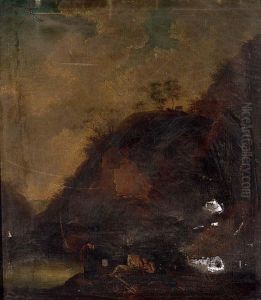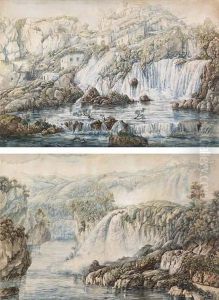Marianne Walpurgis Kraus Paintings
Marianne Walpurgis Kraus, born in 1765 in Buchholz, now part of modern-day Germany, was a multifaceted artist whose talents spanned painting, drawing, and embroidery, along with being recognized for her musical abilities. Kraus's work is emblematic of the artistic endeavors of women in the 18th and early 19th centuries, a period that often relegated women's contributions to the margins of the official art historical canon. Despite the societal constraints of her time, she managed to carve out a space for herself in the arts, showcasing the possibilities for women artists during this era.
Kraus's artistic journey was largely influenced by her background and the cultural environment of the time. Coming from a family that valued the arts, she received support for her creative pursuits from an early age. This nurturing environment allowed her talents to flourish, and she soon became proficient in a variety of mediums. Her works, which included detailed botanical drawings, landscapes, and portraits, reflect the broader European interest in natural sciences and the exploration of the world through art. Beyond her visual artistry, Kraus was also accomplished in music, a common area of accomplishment expected of women in her social stratum, yet she excelled beyond mere accomplishment to a level of recognized proficiency.
The majority of Marianne Walpurgis Kraus's work remains relatively unknown in the wider art historical discourse, a reflection of the challenges many women artists faced in gaining recognition and preserving their legacy. However, her contributions are significant in understanding the role of women in the arts during her lifetime. Kraus's ability to navigate the constraints of her era and to continue creating work that was both personal and explorative offers insight into the broader narrative of women's artistry in the 18th and early 19th centuries.
Marianne Walpurgis Kraus passed away in 1838, leaving behind a body of work that, while not extensively documented or studied, is emblematic of the creativity and resilience of women artists of her time. Her legacy, though not as well-known as some of her contemporaries, provides a valuable perspective on the artistic and cultural contributions of women in a period that often overlooked their achievements. Through her diverse talents and dedication to her crafts, Kraus exemplifies the rich, yet often hidden, history of women's involvement in the arts.

